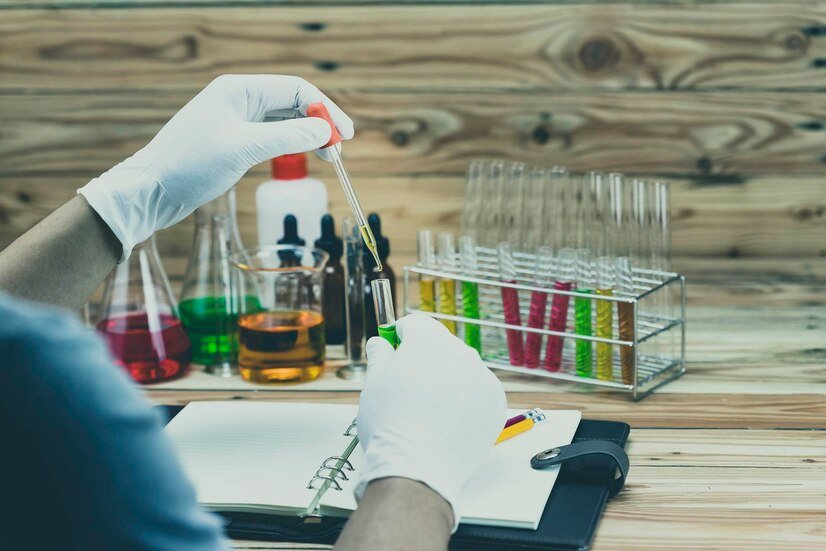Introduction to Butyric Acid
Butyric acid might not be a household name, but it’s gaining traction in the world of biological research. This short-chain fatty acid plays a pivotal role in various physiological processes and has been linked to gut health, inflammation regulation, and even cancer prevention. With its growing significance, understanding how to analyze butyric acid in biological samples is becoming essential for researchers and healthcare professionals alike. Whether you’re diving into metabolic pathways or exploring therapeutic potentials, mastering the techniques for analyzing this compound can open new avenues in medical science. Let’s embark on this journey to uncover what it takes to accurately measure butyric acid and why it matters so much!
Importance of Analyzing Butyric Acid in Biological Samples
Butyric acid plays a crucial role in various biological functions. Its presence can significantly influence metabolic processes and gut health.
Analyzing butyric acid in biological samples allows researchers to understand its effects on inflammation and immunity. This short-chain fatty acid is linked to several health benefits, including improved digestion and protection against certain diseases.
Moreover, studying butyric acid levels can help identify potential imbalances within the microbiome. Such insights are valuable for developing targeted therapies aimed at restoring gut health.
In clinical settings, measuring butyric acid concentrations provides essential information about dietary habits and their implications for overall well-being. This analysis may also shed light on conditions like diabetes or obesity, where metabolic pathways intersect with gut-derived metabolites.
Recognizing the importance of butyric acid in research opens doors to innovative treatments that leverage this compound’s therapeutic properties.
Methods of Analyzing Butyric Acid
Analyzing butyric acid requires precision and a keen understanding of various methodologies. Each method has its strengths, tailored to specific research needs.
One common approach is High-Performance Liquid Chromatography (HPLC). This technique separates components in a liquid sample, making it easier to quantify butyric acid effectively.
Another popular method is Gas Chromatography-Mass Spectrometry (GC-MS). It combines gas chromatography’s separation capabilities with mass spectrometry’s identification power. This dual approach offers highly accurate results for complex mixtures.
Enzymatic assays are also gaining traction. These involve using enzymes that specifically react with butyric acid, producing measurable signals. They can be simpler and faster than traditional methods.
Each technique has unique applications depending on the biological matrix involved—whether it’s urine, feces, or tissue samples. Choosing the right analysis method ensures reliable data for further research into this vital fatty acid.
Sample Preparation Techniques
Sample preparation is crucial for accurate butyric acid analysis. It sets the stage for reliable results and effective interpretation.
One common technique involves liquid-liquid extraction, which separates butyric acid from other biological components. This method enhances purity by isolating the target compound.
Solid-phase microextraction (SPME) is another valuable approach. It captures volatile compounds without extensive sample handling, maintaining integrity throughout the process.
For complex matrices, protein precipitation can be employed to remove interfering substances. By treating samples with organic solvents, researchers can enhance detection sensitivity.
The choice of technique often depends on the specific requirements of your study and the nature of your samples. Each method has its pros and cons and may require optimization to achieve optimal results in butyric acid analysis.
Instrumentation and Equipment Used for Analysis
Analyzing butyric acid demands precision, and the right instrumentation plays a vital role. High-Performance Liquid Chromatography (HPLC) is often the go-to method for its reliability in separating compounds. It allows for accurate quantification of butyric acid in various biological samples.
Gas Chromatography-Mass Spectrometry (GC-MS) also stands out due to its sensitivity and specificity. This technique helps identify and measure minute concentrations of butyric acid, making it invaluable in complex biological matrices.
Other instruments like ion chromatography or capillary electrophoresis can complement these methods, offering alternative pathways for analysis depending on sample type.
The choice of equipment greatly influences data quality. Sophisticated detectors coupled with these techniques enhance detection limits, ensuring even trace amounts are accurately reported. Each instrument offers unique advantages tailored to specific research needs within the realm of butyric acid analysis.
Interpretation and Analysis of Results
Interpreting the results of butyric acid analysis requires a keen understanding of the biological context. Elevated levels may indicate metabolic disorders, while lower concentrations could reflect gut health issues.
Statistical methods are often employed to validate findings. These can help determine if observed changes in butyric acid levels are significant and relevant to specific conditions or treatments.
Comparative analysis is another useful tool. By examining samples from healthy controls against those with disease states, researchers can draw meaningful conclusions regarding butyric acid’s role within different physiological environments.
Visual aids like charts and graphs enhance comprehension. They allow for quicker identification of trends and patterns that might not be immediately obvious in raw data.
A multidisciplinary approach enriches interpretation. Collaborating with biochemists or microbiologists can provide deeper insights into how butyric acid interacts with various biological systems.
Applications of Butyric Acid Analysis in Medical Research
Butyric acid plays a vital role in various medical research fields. Its influence on gut health has garnered attention, especially regarding inflammatory bowel diseases. Researchers are keen to understand how this short-chain fatty acid can alleviate symptoms and promote healing.
Additionally, butyric acid’s impact on metabolic disorders is being explored. Studies suggest that it may improve insulin sensitivity and regulate lipid metabolism, offering potential therapeutic avenues for conditions like diabetes.
Neuroscience also benefits from butyric acid analysis. Emerging evidence shows its effects on neuroinflammation and cognitive function. This raises exciting possibilities for developing treatments targeting neurodegenerative diseases.
The anti-cancer properties of butyric acid have sparked interest too. Ongoing investigations focus on its ability to induce apoptosis in cancer cells while sparing healthy tissue, making it a compelling candidate for future therapies.
These diverse applications highlight the importance of accurate butyric acid analysis in advancing medical knowledge and treatment options across multiple disciplines.
High Performance Liquid Chromatography (HPLC)
High Performance Liquid Chromatography (HPLC) is a powerful analytical technique widely used for the separation and quantification of compounds. It excels in analyzing butyric acid due to its high sensitivity and precision.
The process involves passing a liquid sample through a column packed with stationary phase material. As the mixture travels, different components interact uniquely with the stationary phase, leading to their separation based on various factors like polarity and molecular size.
HPLC can detect butyric acid concentrations at very low levels, making it invaluable in biological studies. Researchers often use this method when exploring metabolic pathways or gut microbiota interactions.
One distinct advantage of HPLC is its versatility; it adapts well to various sample types. This flexibility enhances its application across diverse fields such as pharmacology, food science, and environmental analysis—a true asset for scientists tackling complex questions about butyric acid’s role in health and disease dynamics.
Gas Chromatography-Mass Spectrometry (GC-MS)
Gas Chromatography-Mass Spectrometry (GC-MS) is a powerful analytical technique widely used for the analysis of butyric acid in biological samples. This method combines the features of gas chromatography and mass spectrometry, allowing for both separation and identification of compounds.
During the GC phase, volatile components are vaporized and carried through a column by an inert carrier gas. As they travel, different compounds separate based on their boiling points and affinities to the column material. This results in isolated fractions that can be further analyzed.
The subsequent mass spectrometry step provides detailed information about molecular weights and structures of these separated compounds. It generates distinct fragmentation patterns that act as fingerprints for specific substances like butyric acid.
This makes GC-MS not only accurate but also highly sensitive, capable of detecting low concentrations within complex biological matrices while providing reliable quantitative data essential for research applications.
Challenges and Solutions in Butyric Acid Analysis
Analyzing butyric acid poses several challenges, mainly due to its volatile nature. This volatility can lead to sample loss during collection and processing. Researchers need effective strategies to minimize this issue.
Another hurdle is the sensitivity of detection methods. Low concentrations in biological samples require sophisticated instrumentation for accurate measurement. Using high-quality equipment and optimizing calibration can enhance reliability.
Interference from other compounds is also a concern. Biological matrices often contain substances that may affect results, leading to inaccurate readings. Employing purification techniques or selective extraction methods helps mitigate these interferences.
Consistency in sample preparation is crucial as well. Variability can arise from different handling practices across laboratories, impacting reproducibility of results. Standardizing protocols among researchers ensures more reliable outcomes.
Addressing these challenges involves collaboration within the scientific community for sharing best practices and innovations in analysis techniques.
Real-life Applications of Butyric Acid Analysis
Butyric acid plays a crucial role in various real-life applications, particularly in health and nutrition. It serves as a key metabolite produced by gut bacteria during the fermentation of dietary fibers. Analyzing butyric acid levels can provide valuable insights into gut health, inflammation, and overall metabolic processes.
In medical research, evaluating butyric acid concentrations helps identify conditions like irritable bowel syndrome and inflammatory bowel disease. Higher or lower than normal levels may indicate dysbiosis or other gastrointestinal disturbances.
Another fascinating application lies within cancer research. Butyric acid exhibits potential anti-cancer properties; thus, monitoring its presence might offer clues to tumor progression or treatment efficacy.
Beyond human health, butyric acid analysis is significant in agriculture too. It influences animal nutrition by promoting gut health among livestock. Understanding these dynamics enhances productivity while minimizing reliance on antibiotics. The versatility of butyric acid underscores its importance across multiple fields.
Conclusion
Butyric acid plays a significant role in various biological processes, making its analysis crucial for understanding health and disease. There are several methods available for analyzing butyric acid in biological samples, each with unique advantages and challenges. From traditional techniques like High-Performance Liquid Chromatography (HPLC) to more advanced methods such as Gas Chromatography-Mass Spectrometry (GC-MS), researchers have a range of options to choose from.
Sample preparation is essential to ensure accurate results, and the choice of instrumentation can greatly impact the quality of data obtained. By carefully interpreting the results, scientists can derive meaningful insights that contribute to medical research applications—from gut health studies to potential therapeutic implications.
Despite some challenges inherent in butyric acid analysis, innovative solutions continue to emerge, enhancing detection sensitivity and specificity. This ongoing evolution reflects the growing recognition of butyric acid’s importance within both clinical settings and research environments.
As science advances, so too does our understanding of how butyric acid influences human health. The commitment to refining analytical techniques will undoubtedly lead us toward new discoveries that could ultimately benefit public health at large.







